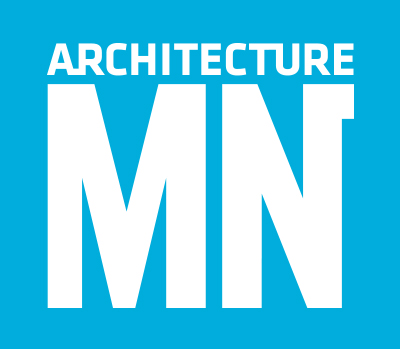MSR transforms the interior of an old gymnasium into the Visual Culture, Arts, and Media Building, a maker space for every student on campus
By Joel Hoekstra
A few years ago, Haverford College, a small liberal arts school outside of Philadelphia, was looking to hire an architect, and English professor Laura McGrane was one of the project leads. As director of Haverford’s Hurford Center for the Arts and Humanities, McGrane had been tasked with developing a center focused on new media and culture. The Visual Culture, Arts, and Media (VCAM) Building would be a brick-and-mortar project, but it would be different from most other buildings on campus because it would be shared by everyone. “The project wasn’t intended to house an individual department,” says McGrane. “We wanted to invite the full campus to think about what it means to work on, think about, and reflect on arts and visual culture.”
While the project was picking up steam, McGrane happened to visit Carleton College in Northfield, Minnesota, and got a tour of the Weitz Center for Creativity, an arts facilitydesigned by MSR. The firm’s name rang a bell: MSR had also designed another project she admired, an arts building at Drexel University in Philadelphia. What’s more, both endeavors were inventive adaptive-reuse projects. McGrane had a hunch that MSR might be a good fit for what Haverford had in mind.
The Haverford campus is small, with just 1,300 students on 200 acres. Space for new construction was limited, but school officials wondered if VCAM might fit into the Old Gym, a solid stone structure erected on the college’s central green in 1900. The building hadn’t hosted a sporting event in a half century—in fact, it hadn’t been used at all for several decades. Over the years, Haverford had asked several architects, including AIA Gold Medal recipient Stephen Holl, to draw up schemes for the building’s reuse, but nothing ever came of the proposals. “It was a building that was much loved but underutilized,” McGrane observes.
The program was challenging. Planners wanted VCAM to house both a screening room for films and a maker space where hammers, drills, buzz saws, laser cutters, and other noisy equipment could be used to cobble together almost anything a student might imagine. Additionally, the building needed to include a handful of classrooms and offices. And some lounge areas. And a working kitchen with a refrigerator, range, and oven. “Food is part of the maker culture and experience,” says McGrane. “Students really wanted a space where they could gather, eat, and build community.”
Known for its innovative approach to adaptive reuse, MSR saw the Old Gym as an opportunity to meld past, present, and future. The interior of the three-story space was open, daylit by enormous arched windows. Thin, elegant trusses soared over the gym floor, while a suspended track ringed the perimeter. MSR found ways to preserve the character-defining elements, inserting a box into the space that met programming requirements without the need for additions. “We were in continual communication to maintain a delicate balance between scope and available budget,” says MSR principal Traci Lesneski, Assoc. AIA. “We tried to emphasize that bigger wasn’t better—that quality and experience were key.”
The resulting 25,000-square-foot building mixes open and closed spaces. Students can watch a quiet film in the 65-seat screening room totally unaware of the laser cutters and 3D printers being operated a short distance away. From up on the track, students nestled into comfy chairs can gaze down at a performance in the lounge area. Sightlines even extend into the basement: A cutout in the original gym floor creates visual connections between the lowest level of the building and the highest. VCAM is also wired for the best-quality sound and video technology, yielding numerous opportunities for performances, art installations, expanded documentary, and experimental media work.
Getting all the construction equipment and materials into the building took some doing. The Haverford campus is an arboretum, so, as McGrane puts it, “Every tree matters.” The vehicles and machinery had to carefully navigate tree roots and branches. There was even debate over whether some hydrangeas could be moved. “Getting this space constructed was definitely a dance that required some choreography,” says McGrane. “But in the end, I think it was quite successful.”
Winner of a 2018 AIA Education Facility Design Award, the VCAM Building is now open 24/7, allowing makers of every stripe to indulge their creativity—whether it’s baking cookies, crafting a documentary, or soldering a motherboard—whenever the impulse strikes. Lesneski says she knows the building is thriving because the flow of images on the @haverfordvcam Instagram feed is endlessly entertaining. The photo stream reveals a compelling model for how to meld cultural, media, and arts pursuits while also rooting them in a sense of history and place.
2018 AIA MINNESOTA HONOR AWARDS JUROR COMMENT
“The strength of this intervention is how it provides a whole new reading of the original building, both inside and out. The gymnasium has been transformed into something completely other, and yet its bones are still so legible.”
—Marlon Blackwell, FAIA
HAVERFORD COLLEGE VISUAL CULTURE,
ARTS, AND MEDIA (VCAM) BUILDING
Location: Haverford, Pennsylvania
Client: Haverford College
Architect: MSR Design
Principal-in-charge: Traci Lesneski, Assoc. AIA
Project team: Traci Lesneski, Assoc. AIA; Dagmara Larsen, Assoc. AIA; Thomas Meyer, FAIA; Bob Ganser, AIA; Veronica McCracken
Energy modeling: Bruce E. Brooks & Associates
Landscape architect: Haverford College Arboretum
Construction manager: Whiting-Turner
Size: 25,000 square feet
Total project cost: $15.5 million
Completion: October 2017
Photographer: Lara Swimmer


